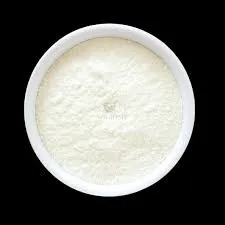
kol . 15, 2024 17:37 Back to list
Exploring the Various Viscosity Grades of HPMC for Optimal Performance in Diverse Applications
Understanding HPMC Viscosity Grades A Comprehensive Guide
Hydroxypropyl Methylcellulose (HPMC) is a versatile and commonly used cellulose derivative that plays an essential role in various industries, including pharmaceuticals, food, cosmetics, and construction. One critical aspect of HPMC that affects its functionality is its viscosity grade. Understanding HPMC viscosity grades is paramount for formulators and manufacturers, as it directly impacts the performance of products.
What is HPMC?
HPMC is a non-ionic, water-soluble polymer derived from cellulose. It is known for its adhesive properties, thickening abilities, and film-forming characteristics. Because of these attributes, HPMC is widely utilized in formulations such as drug delivery systems, food additives, and cosmetic products.
Viscosity Grades An Overview
HPMC is available in different viscosity grades, which are determined primarily by the molecular weight and degree of substitution of the cellulose chain. These viscosity grades reflect how the polymer behaves when dissolved in water, measured in centipoise (cP), a unit for dynamic viscosity.
The viscosity grade of HPMC is crucial as it dictates how a formulation will flow, its stability, and, ultimately, its efficacy. For example, higher viscosity grades typically yield thicker solutions, while lower grades produce more fluid mixtures. Therefore, selecting the appropriate viscosity grade is essential for achieving the desired consistency and performance in formulation.
Classification of HPMC Viscosity Grades
HPMC grades can be classified into three primary categories based on their viscosity
hpmc viscosity grades

1. Low Viscosity (2,000 - 5,000 cP) These grades are often selected for applications where a thin and easily pourable liquid is required. They are commonly used in personal care applications, such as lotions and creams, where a lightweight texture is desired. Low viscosity HPMC grades are also employed in the food industry, particularly in sauces and dressings, to enhance mouthfeel without making the product overly thick.
2. Medium Viscosity (5,000 - 15,000 cP) This range is perhaps the most versatile and widely used in various applications. Medium viscosity HPMC serves as an effective thickening agent in pharmaceuticals and cosmetics, providing a balance between ease of application and product stability. In construction, medium viscosity HPMC is used in cement and plaster formulations, enhancing workability without compromising the product's integrity.
3. High Viscosity (15,000 - 100,000 cP) High viscosity grades create significantly thicker solutions and are ideal for applications requiring substantial gel or paste formation. This category is commonly utilized in heavy-duty adhesives, sealants, and coatings, where a robust and stable formulation is critical. Additionally, high viscosity HPMC is beneficial in the formulation of controlled-release drug systems, where the rate of drug release needs to be regulated.
Factors Influencing the Choice of Viscosity Grade
When choosing the appropriate HPMC viscosity grade for a specific formulation, several factors must be considered
- Application Requirements Different products have unique requirements for viscosity based on their intended use. - Temperature Sensitivity The viscosity of HPMC can change with temperature, so formulators must consider the end-use conditions. - Interaction with Other Ingredients The presence of salts, acids, or other polymers can influence the final viscosity of HPMC in a formulation.
Conclusion
In summary, the viscosity grades of HPMC play a crucial role in determining the efficacy and stability of various formulations across multiple industries. By understanding the characteristics and applications of each viscosity grade, manufacturers can effectively select the appropriate HPMC to meet their product requirements. In an ever-evolving market, staying informed about HPMC viscosity grades will empower formulators to achieve optimal results in their applications.
-
Versatile Hpmc Uses in Different Industries
NewsJun.19,2025
-
Redispersible Powder's Role in Enhancing Durability of Construction Products
NewsJun.19,2025
-
Hydroxyethyl Cellulose Applications Driving Green Industrial Processes
NewsJun.19,2025
-
Exploring Different Redispersible Polymer Powder
NewsJun.19,2025
-
Choosing the Right Mortar Bonding Agent
NewsJun.19,2025
-
Applications and Significance of China Hpmc in Modern Industries
NewsJun.19,2025







